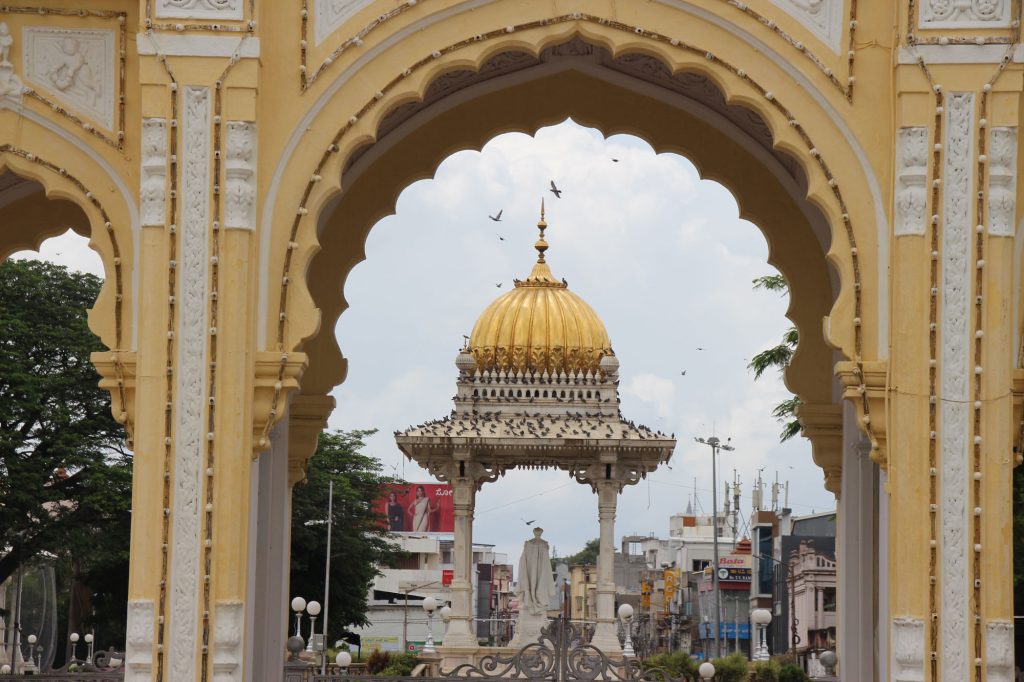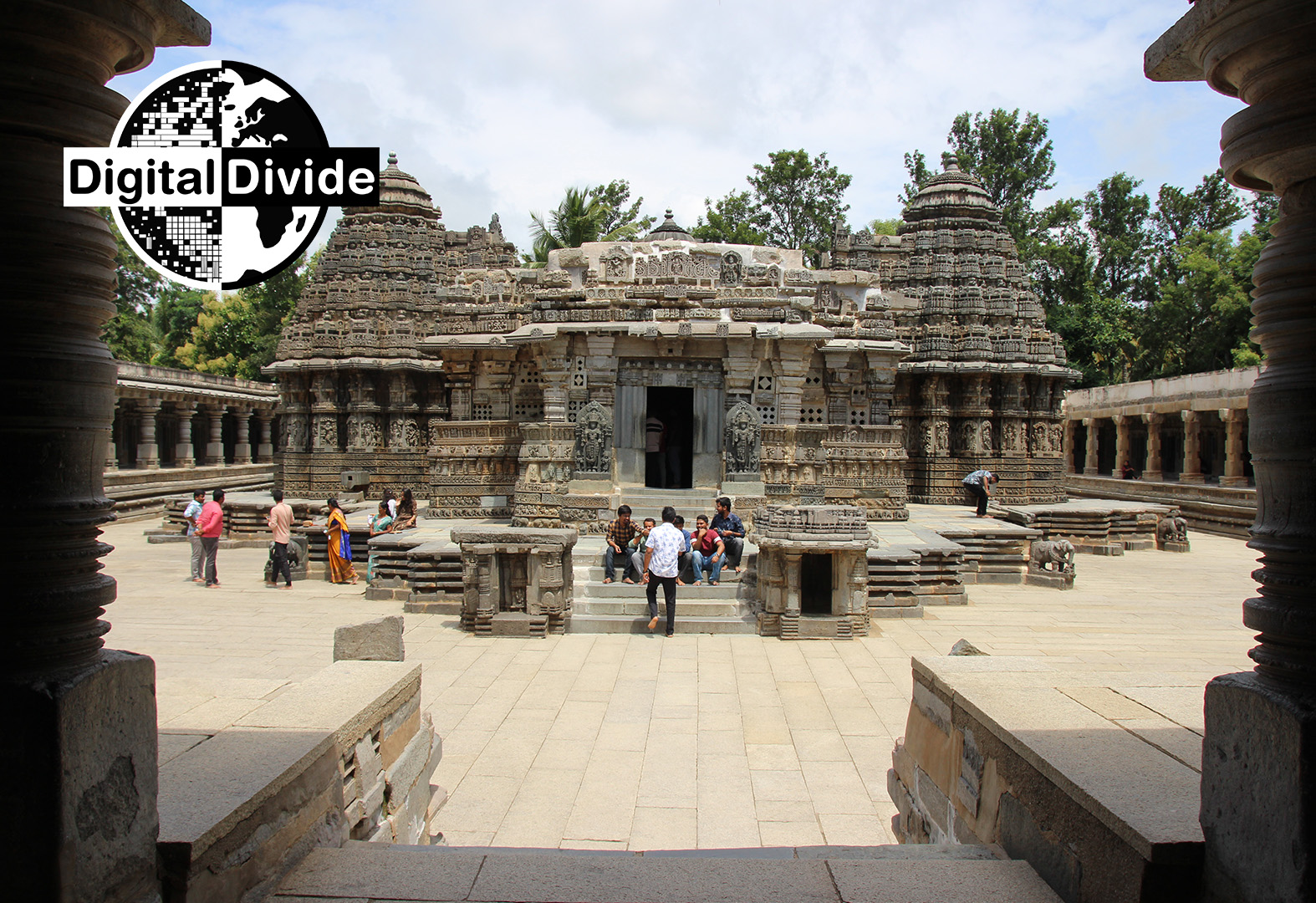This blog is about personal experiences and inspiring people I met in India. During my one-month stay in Bengaluru, I was able to get a glimpse of life in India, where digitalisation plays a big role: it enables communication, payments, e-governance, IT jobs and much more. Join me on my journey to a country rich in culture, people, colours, tastes and technology.
Chapter 1: Arriving in India’s Silicon Valley
It is difficult for me to comprehend, but Bengaluru has more inhabitants than the entire country of Switzerland. Coming from a small town in South Tyrol (Northern Italy) with a population of around 40,000, I can’t quite wrap my head around these numbers. Thanks to the staff mobility programme of ZHAW international and Swissnex, I am able to do a project on science communication and at the same time work remotely from India. It is mid-June when I arrive, the temperatures in Bengaluru are pleasant – they stay between 20 and 30°C – and I am now one of close to 14 million people living in India’s third most populous city and the country’s IT hub.
When I get to my apartment in the middle of the night, one of the first things I do is connect to the Wi-Fi. Then I want to activate a prepaid data plan for the Indian SIM card. For 28 days and 1.5 GB/day, I would have to pay ₹239 (Indian rupees), according to the SIM card provider’s app. How much is that? A quick search tells me that it is less than CHF 2.50. Over the next few days, I learn that many people can afford it because access to mobile connectivity and the internet is so cheap. And not only in urban areas, but also in rural areas, where over 60% of the population live, many people have a phone. Widespread access to the internet and information is part of the Digital India programme launched by the Indian government in 2015. “In the last nine years, the Digital India programme has made significant strides in enhancing digital infrastructure, providing accessible government services, and empowering citizens by leveraging technology,” according to a recent Forbes article. The authors write that by September 2023, around 1.3 billion people will have an online-based digital identity. And there are many other facets of everyday life that will be affected by digitalisation, as I will discover in the coming days and weeks.


Source: Videos by Johanna Seiwald, edited by Saraja Gantner (also posted on Instagram by Swissnex in India)
Chapter 2: Digital access for all?
The first time I go to the Swissnex office, I activate a few more apps: all of them allow me to find and book an autorickshaw, a good way to navigate the city’s notorious traffic. It is only later that I pluck up the courage to walk to the office. And it takes courage, as Bengalurians tell me: walking in the city is like a survival obstacle course, and crossing the streets is tricky because of the “wall of steel” of cars, autorickshaws, motorcycles, buses, etc., all of which move seamlessly and seemingly without regard for any rules I know. From time to time cows, horses and street dogs are also on the road. But back to the ride-hailing apps: they are very convenient and usually work well, except at times of high demand, mostly in the evening. Some of them are fairer to drivers than others, and it is nice that the price is set before the ride starts, but you can also give tips. As a foreigner, however, the apps do not allow you to pay by card. During my stay I pay most things electronically – in restaurants, shops and the supermarket – but I need Indian rupees for the car rides – in the exact amount as the drivers usually do not have change. People with Indian bank accounts have the advantage of being able to pay directly from their mobile phones. The system works similarly to Twint in Switzerland.
What contributes to the traffic congestion are apps like Swiggy or Zomato, where you can order delicious food from restaurants, groceries from supermarkets, things from pharmacies and other stores. Home delivery is very convenient, but can everyone benefit from these apps? During my first week in India, I attend an event on digital accessibility. I learn that while the digital world can empower people with disabilities, there is still a lot of content, apps and websites that are not accessible or become inaccessible after updates. For example, in the experience of a deaf person, food delivery apps do not take into account that a person cannot hear. The default is for delivery drivers to call when they arrive at the location. Also, content that is not accessible by screen readers poses significant challenges for visually impaired or blind people. In addition, there may be trade-offs if convenient applications are costly. A full summary of my thoughts just after the event can be found in my LinkedIn post.
Chapter 3: Knowledge for all – bridging the gap in the digital world
During the four weeks, Swissnex in India allows me to talk to many science communicators about their challenges and the opportunities they see in science communication. Talking about digitalisation, it becomes quite clear that social media and other digital forms of communication are a great way to reach the Indian audience. Simon Kemp of “DataReportal” writes that “a total of 1.12 billion cellular mobile connections were active in India in early 2024, with this figure equivalent to 78 percent of the total population”. It should be noted, however, that a person may own more than one mobile phone. Simon Kemp also writes that internet usage was 52.4% and that India had 462 million social media users in January 2024. While social media has huge potential, some of my fellow science communicators have told me of potential pitfalls, one of which is the language barrier.
One weekend I travel by train to Mysore, a city 2 hours from Bengaluru. There I meet science communicator Kollegala Sharma, with whom I visit the ancient temple in the teaser image of this blog and talk about his inspiring projects. Before becoming a science communicator, he was a scientist. But he noticed that there are some walls built up around knowledge. Especially in rural areas, there is low literacy, economic disparity, geographical distance between universities, libraries and other institutions, and differences in science literacy. Given India’s great diversity, he set out on a mission to break down some of these walls and build a bridge between science and the general public. While the internet makes information accessible to many, many people in the Indian state of Karnataka do not speak English, but Kannada. So, he and a team of volunteers write science texts in the local language. He then shares them on social media, mainly Whatsapp, where teachers can access them and use the texts as a resource for their students in remote villages. They also create podcasts that are broadcast on 22 local radio stations. In addition to these digital tools, they organise plays and events and publish a magazine in Kannada. Some teachers print the magazine with their own money and distribute it in class. Remarkably, Kollegala has no institutional or financial support (other than the occasional venue sponsor) and receives no income, yet he is able to reach many people who would not otherwise have access to scientific resources. “Science is for everyone and we need independent science communication without borders to reach everyone,” he says, telling me about the many reactions he gets when a magazine or radio programme is delayed. This is what drives him in his projects and his passion is contagious.

One month is not enough to get a detailed picture of how digitalisation is impacting diverse India. Are there important aspects missing? Let me know in the comments and tell me about your experiences. Also, if you want to know more about my project and the incredible science communicators I met in India, I will be posting updates on LinkedIn. Follow ZHAW digital to make sure you don’t miss out.
Sources and more information
- Forbes article by Dr. Shruti Mantri and Mr. Ramesh Kotnana, 19.07.2024: Digital India Programme: A journey of transformation
- Article about the “DataReportal” by Simon Kemp: DIGITAL 2024: INDIA
- Interview with Kollegala Sharma: ‘Why Can’t We Make Small Talk About Science?’
- Newsletter “Anomaly” by Swissnex in India
